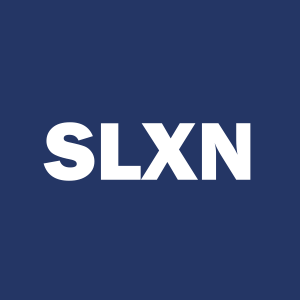PESG Releases Market Update: Silexion Therapeutics Advances KRAS-Targeting Therapies with New Collaboration As Industry Demand for Precision Oncology Solutions Rises
Silexion Therapeutics (NASDAQ: SLXN) is advancing precision oncology with a focus on KRAS-driven cancers, among the most challenging targets in oncology. In collaboration with Evonik, Silexion has developed a long-acting PLGA microparticle formulation for SIL-204, its next-generation siRNA candidate. Preclinical studies showed high efficacy, with sustained-release therapy effectively reducing tumor size in KRAS-mutated pancreatic cancer models.
Silexion’s RNAi approach silences KRAS mutations at the genetic level, overcoming barriers that limit small-molecule inhibitors. This advancement comes as the oncology industry sees surging M&A activity, such as Pfizer’s
By targeting a broader range of KRAS mutations (pan-G12x and G13D), SIL-204 holds promise beyond pancreatic cancer, with potential applications in colorectal and lung cancers. Positioned at the center of high unmet medical need and growing market demand, Silexion stands out as a strong contender in the rapidly evolving precision oncology space.
KRAS Mutations: A Major Oncology Target
KRAS mutations remain among the most significant challenges in oncology. Found in over
Silexion has taken a differentiated approach, utilizing RNAi to silence KRAS mutations at the genetic level. Its Local Drug EluteR (LODER™) platform bypasses the tumor microenvironment’s barriers, delivering siRNA directly into the tumor for localized, high-efficacy treatment. The company’s first-generation LODER platform showed significant promise in Phase 2 trials for non-resectable locally advanced pancreatic cancer (LAPC), extending overall survival by 9.3 months and achieving a
The announcement of its collaboration with Evonik, a global leader in specialty chemicals, adds another layer of innovation to Silexion’s strategy. The collaboration has produced a long-acting PLGA microparticle formulation for SIL-204, Silexion’s next-generation siRNA candidate. Preclinical data demonstrated high efficacy in reducing tumor size and inducing tumor necrosis in mouse models with KRAS-mutated human pancreatic tumor cell lines. This formulation enables a sustained-release mechanism, improving stability and precision targeting—critical attributes for therapies in notoriously hard-to-treat cancers like pancreatic cancer.
Strategic Positioning: Expanding Beyond Pancreatic Cancer
Silexion’s SIL-204 represents a significant leap forward in RNAi technology, as it targets a broader range of KRAS mutations (pan-G12x and G13D), making it applicable across multiple cancer types. While its initial focus remains pancreatic cancer, SIL-204’s potential in colorectal and lung cancers opens substantial market opportunities. Colorectal cancer alone is the third most common cancer worldwide, with KRAS mutations implicated in approximately 40
This pipeline expansion aligns with a broader industry trend where precision oncology therapies target multiple indications driven by shared genetic mutations. Silexion’s localized delivery system, combined with the ability to target a broader set of KRAS mutations, positions the company as a uniquely compelling player in this space.
Industry Dynamics: M&A Appetite for Precision Oncology
The rise of innovative therapies like Silexion’s comes amid a surge in mergers and acquisitions (M&A) activity within the oncology sector. Pharmaceutical giants are aggressively acquiring next-generation oncology assets to bolster their pipelines and address unmet medical needs.
Recent high-profile deals underscore this trend:
-
Pfizer’s
$43 billion -
AbbVie’s
$10.1 billion
The KRAS inhibitor market, currently projected to grow at a
Navigating a Transformative Precision Medicine Market
The precision medicine market is projected to grow from
While challenges remain—such as the risks inherent in clinical-stage drug development and the still-nascent state of RNAi therapies—Silexion’s collaboration with Evonik demonstrates its strategic focus on overcoming technical barriers to sustained efficacy. This partnership positions SIL-204 to advance into Phase 2/3 trials by 2025-2026, an important milestone for the company’s growth trajectory.
Conclusion: A Strategic Contender in Precision Oncology
Silexion Therapeutics continues to make meaningful strides in addressing one of oncology’s most challenging targets—KRAS-driven cancers. The company’s collaboration with Evonik on the PLGA microparticle formulation for SIL-204 enhances its potential to deliver transformative therapies for pancreatic and other KRAS-driven cancers.
Amid rising M&A activity and a growing precision medicine market, Silexion stands at the intersection of high unmet medical need and significant market opportunity. As it advances its clinical pipeline and expands its focus to other cancer types, Silexion’s differentiated approach positions it as a key player to watch in the evolving oncology landscape.
With innovative RNAi technology, strategic collaborations, and a clear roadmap for clinical advancement, Silexion may not only redefine treatment paradigms for KRAS-driven cancers but also emerge as a prime target for pharmaceutical partners seeking cutting-edge assets in precision oncology.
PESG Research is a digital research and coverage brand, offering commentary and exploration into the current and future state of the Pharma, BioTech and Sustainability and other industries.
***
Important disclaimers and disclosures: This update may include speculative forward looking statements. Readers are cautioned that any such forward-looking statements are not guarantees of future performance and involve risks and uncertainties, and that actual results may differ materially from those in the forward-looking statements as a result of various factors. The pharma, biotech, precision medicine, and other industries and or markets mentioned are volatile and risky and readers are advised to seek out professional advice in the relevant fields from licensed professionals. This report is for informational purposes only and is not intended to serve as financial, investment or any form of professional advice, recommendation or endorsement. Please review the full documentation detailing financial compensation disclosures and disclaimers the article is subject to. [https://justpaste.it/ab9dn/pdf]. PESG Research is a commercial digital brand operated for IR purposes compensated by the issuer aforementioned to provide coverage of news and developments related to innovative companies as detailed in the full documentation and it is thus subject to conflicts of interest.
View source version on businesswire.com: https://www.businesswire.com/news/home/20241217099424/en/
PESG Editorial Desk
ronald@futuremarketsresearch.com
Source: PESG Research







